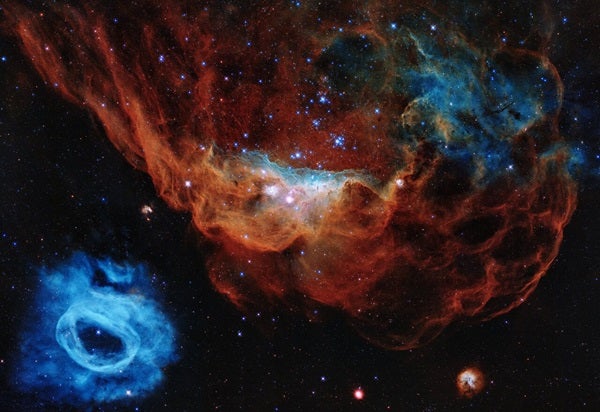On April 24, NASA celebrated the 30th anniversary of the Hubble Space Telescope’s launch with a star-studded image featuring NGC 2014 (right) and NGC 2020. These nebulae are part of a much larger star-forming complex located in the Large Magellanic Cloud. The structure is often called the Cosmic Reef, in part for NGC 2014’s intricate, coral-like appearance. Within the colorful region is a bright group of young stars, each 10 times the mass of our Sun or more. These massive stars are blasting away the gas and dust from which they formed, carving away their birth nebula. The region’s reddish color comes from glowing hydrogen and nitrogen gas, while bluer colors show oxygen gas energized by the stars’ ultraviolet light.
Nearby, blue-hued NGC 2020 is generated by a single Wolf-Rayet star 15 times more massive than the Sun and 200,000 times as luminous. NGC 2020’s color also comes from oxygen gas, which has been blown away from the central star and heated to roughly 19,800 degrees Fahrenheit (11,000 degrees Celsius).
Hubble has made invaluable contributions to science and outreach, engaging scientists and the public alike with breathtaking views of our universe. Its scientific contributions include 1.4 million astronomical observations to date, with many more to come. NASA expects the telescope to remain operational through at least 2025, and its orbit will remain stable until the 2030s.










